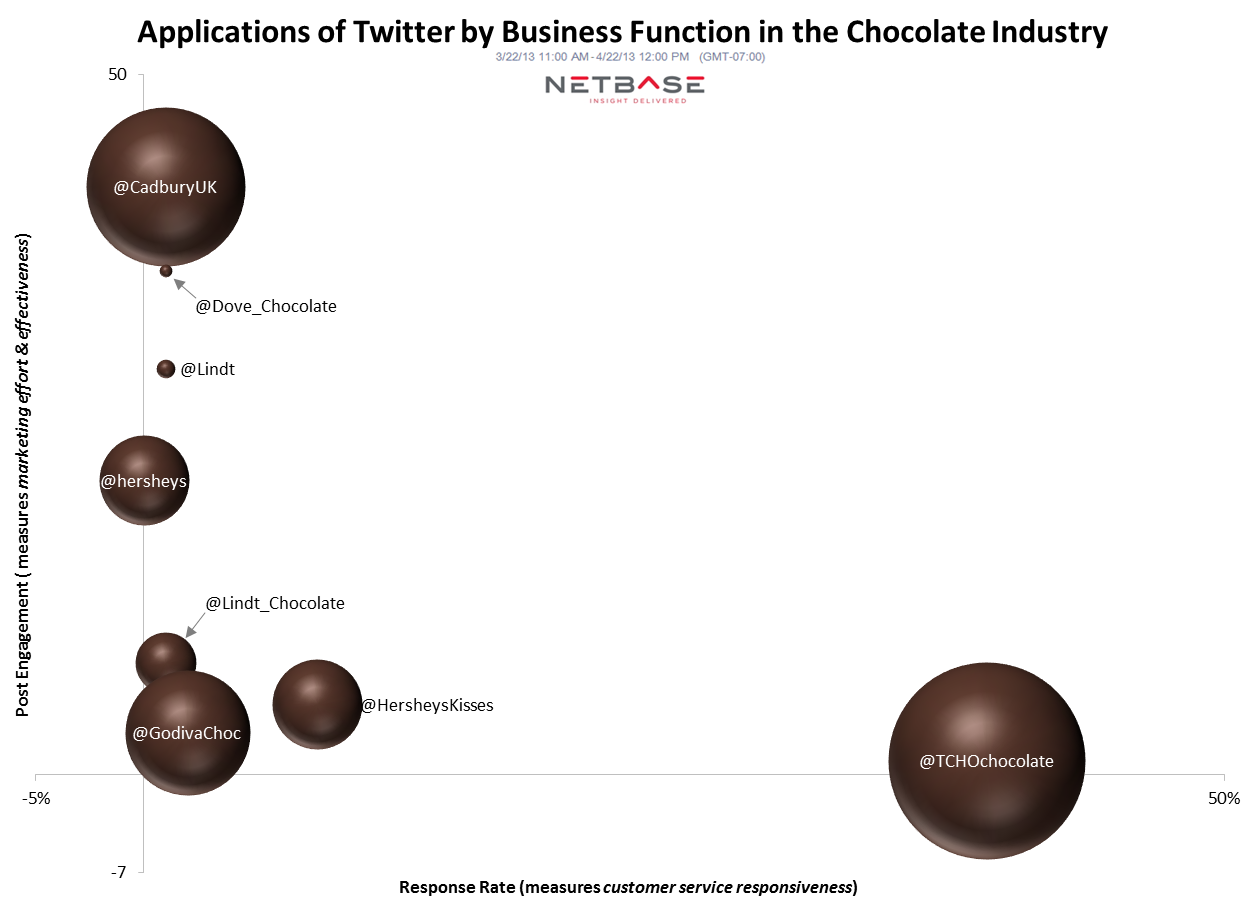Our partner J.D. Power & Associates recently published their 2013 Social Media Benchmark Study of consumer perception toward companies and their use of social media. J.D. Power surveyed two kinds of social interactions—digital marketing and customer service.
To build on their findings, I took a look at this same question but through a different lens. At NetBase we are currently in beta testing with our Digital Channel Intelligence solution for Twitter. Customers had been asking for a way to measure their effectiveness in the same two areas J.D. Power reported on. So NetBase is gearing up to offer two key metrics as part of NetBase Digital Channel Intelligence for Twitter:
1] Post Engagement – The rate at which followers interact with a tweet, which basically measures the effectiveness of Twitter marketing. It’s the (Number of Retweets + Number of Replies) / Number of Brand Tweets. In a nutshell, it measures how much consumers respond to the company’s tweets.
2] Response Rate – The rate at which the company responds to consumer-originated tweets. This basically measures customer service responsiveness.
Think of these rates as measures of the dialogue between the consumer and the company. Consistent and engaged communication would mean high scores for both rates.
As my readers my know, I love chocolate, so I was eager to test this capability and find out which chocolate company has the highest Post Engagement (digital marketing effectiveness) and Response Rate (customer service responsiveness).
What I found out is chocolate companies seem to be using their Twitter handles primarily for one or the other (digital marketing vs. customer service) but not both. You can see that in the graph presented here. It covers the last month of tweets made by each Twitter handle. The size of the bubble corresponds to the number of tweets the brand authored in the past month.
TCHO seems the best from a customer-service standpoint. To see this, look at the x-axis that shows the Response Rate. TCHO had the highest rate of 39% but their Post Engagement is the lowest of all at 1. The 39% rate means TCHO has responded to 39% of the tweets authored by consumers who mention @TCHOchocolate. I think this makes sense. TCHO has strong roots in technology, having been founded in San Francisco. They’re social-media savvy. But I’m surprised they don’t also have a strong Post Engagement since their founders were from the marketing-heavy Wired magazine.
By contrast, Cadbury seems to be the one with the strongest Twitter marketing. That’s because their Post Engagement of 42 is higher than the other brands. But their Response Rate is 1%, a low score that ties with Lindt and Dove. Cadbury’s Post Engagement of 42 means that, on average, every time Cadbury tweets, 42 people retweet or reply to Cadbury. Considering that the analysis timeframe straddles Easter, it sort of makes sense for Cadbury’s marketing to have performed the best since they’re the chocolate company that most associates itself with Easter, in my opinion.
The J.D. Power study shows that six industries (airline, auto, banking, credit card, telecom and utility) are showing varying levels of success in balancing the use of social media for marketing and customer service. I think our data from the Twitter Digital Channel Intelligence shows the same thing in the chocolate industry.
I think there’s an opportunity for a chocolate company to invest in doing a good job at both customer service and marketing in social media. I feel like I’m more likely to buy from companies that offer good customer service. And according to J.D. Power, their “study finds a correlation between overall satisfaction with a company’s social marketing efforts and consumers’ likelihood to purchase and their overall perception of the company” (Source: JD Power & Assoc.).
So chocolate companies: invest more in social media for digital marketing AND customer service and I’ll buy your chocolate. I’d probably buy your chocolate anyway. But maybe I’ll buy more of it.
